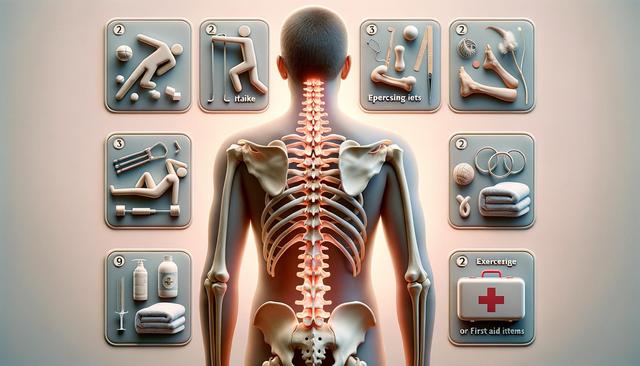Understanding Sciatica and Its Triggers
Sciatica refers to pain radiating along the sciatic nerve, which extends from the lower back through the hips and buttocks and down each leg. This condition is usually caused by compression of the nerve due to a herniated disc, spinal stenosis, or muscle inflammation. The pain can range from a mild ache to a sharp, burning sensation, and in some cases, it may be accompanied by numbness or tingling. Understanding the root cause is essential to formulating an effective recovery plan. In many cases, lifestyle factors such as poor posture, prolonged sitting, or a lack of physical activity contribute to the onset or worsening of sciatica. Recognizing these factors is the first step in reclaiming comfort and beginning the journey to recovery.
By identifying what triggers your sciatica, you can take proactive steps to avoid aggravating the condition. For example, individuals who sit for long periods may benefit from ergonomic modifications to their workspace or incorporating standing breaks into their routine. Similarly, those who perform repetitive lifting or twisting motions should consider proper body mechanics and possibly adjusting their work habits to reduce strain.
Essential Vitamins for Sciatica Recovery
Nutrition plays a critical role in supporting nerve health and reducing inflammation, both of which are important during sciatica recovery. Certain vitamins have been shown to aid in nerve regeneration, muscle function, and overall healing processes. Incorporating these nutrients into your diet or supplement routine can contribute positively to your recovery strategy.
Key vitamins for sciatica recovery include:
- Vitamin B12: Supports nerve repair and proper functioning of the central nervous system.
- Vitamin D: Helps maintain bone health and reduce inflammation, which can ease pressure on the sciatic nerve.
- Vitamin C: Known for its antioxidant properties and role in tissue repair.
- Vitamin E: Aids in blood circulation and reduces oxidative stress around nerve tissues.
While a balanced diet is the best source of these nutrients, supplements may be considered if dietary intake is insufficient. Consulting with a healthcare provider before beginning any supplement regimen is recommended to ensure safety and appropriateness for your specific condition.
Effective Exercises to Support Healing
Exercise is a key component in sciatica recovery, as it helps strengthen muscles, improve flexibility, and promote blood flow—all of which contribute to reducing nerve compression. However, it’s important to choose exercises that are appropriate for your condition and to perform them with proper technique.
Some effective movements that may aid in sciatica relief include:
- Knee-to-chest stretches: Gently stretch the lower back and relieve pressure on the sciatic nerve.
- Piriformis stretches: Target the piriformis muscle, which can irritate the sciatic nerve when tight.
- Pelvic tilts: Strengthen abdominal muscles and improve posture.
- Low-impact aerobic exercises: Walking or swimming can enhance circulation without placing undue stress on the spine.
Before beginning any exercise routine, it is advisable to consult with a physical therapist or healthcare provider. They can help tailor a program to your specific needs and ensure that movements are being performed safely and effectively.
Habits That Promote Long-Term Relief
Establishing healthy daily habits can significantly influence the progression and recurrence of sciatica symptoms. Consistency in these habits not only supports the healing process but also helps prevent future flare-ups. Integrating mindful practices into your lifestyle forms a strong foundation for long-term relief.
Helpful habits to adopt include:
- Maintaining good posture: Whether sitting or standing, keeping your back aligned reduces stress on the spine.
- Alternating positions: Avoid staying in one position for too long; take breaks to move around regularly.
- Using ergonomic furniture: Chairs and desks designed for proper spinal alignment can make a big difference.
- Staying hydrated: Proper hydration supports disc health and overall bodily function.
- Managing stress: Techniques such as meditation, deep breathing, or light yoga can help manage pain and improve quality of life.
These habits, while simple, have a cumulative effect over time. They support not only the physical aspects of recovery but also contribute to emotional well-being, which is often impacted by chronic pain conditions like sciatica.
When to Seek Professional Help
While vitamins, exercise, and healthy habits are important components of recovery, there are situations where professional intervention is necessary. If sciatica symptoms persist for more than a few weeks, worsen over time, or are accompanied by severe pain or loss of function, it is crucial to seek medical evaluation. Early intervention can prevent complications and help tailor a more effective treatment plan.
Healthcare professionals such as physiotherapists, chiropractors, and orthopedic specialists can offer additional treatment options, including:
- Physical therapy: Personalized exercise programs to strengthen and stretch affected areas.
- Manual therapy: Techniques such as massage or manipulation to relieve pressure on the sciatic nerve.
- Medical imaging: Tools like MRI or X-rays to better understand the underlying cause of your symptoms.
- Medication management: In some cases, medications may be prescribed to manage inflammation and pain.
Seeking professional guidance ensures that your recovery plan is safe, effective, and aligned with your individual health profile. It also provides reassurance and support throughout the healing process.
Conclusion
Recovering from sciatica requires a thoughtful, comprehensive approach that combines proper nutrition, targeted exercise, and supportive daily habits. While the journey may vary for each individual, integrating these strategies can lead to meaningful improvements in both comfort and mobility. By addressing the condition through multiple avenues—such as incorporating helpful vitamins, engaging in restorative movement, and fostering healthy routines—you equip yourself with valuable tools for long-term relief. If symptoms persist or intensify, seeking professional care can further enhance your recovery path. With consistency and care, reclaiming comfort from sciatica is a realistic and achievable goal.


